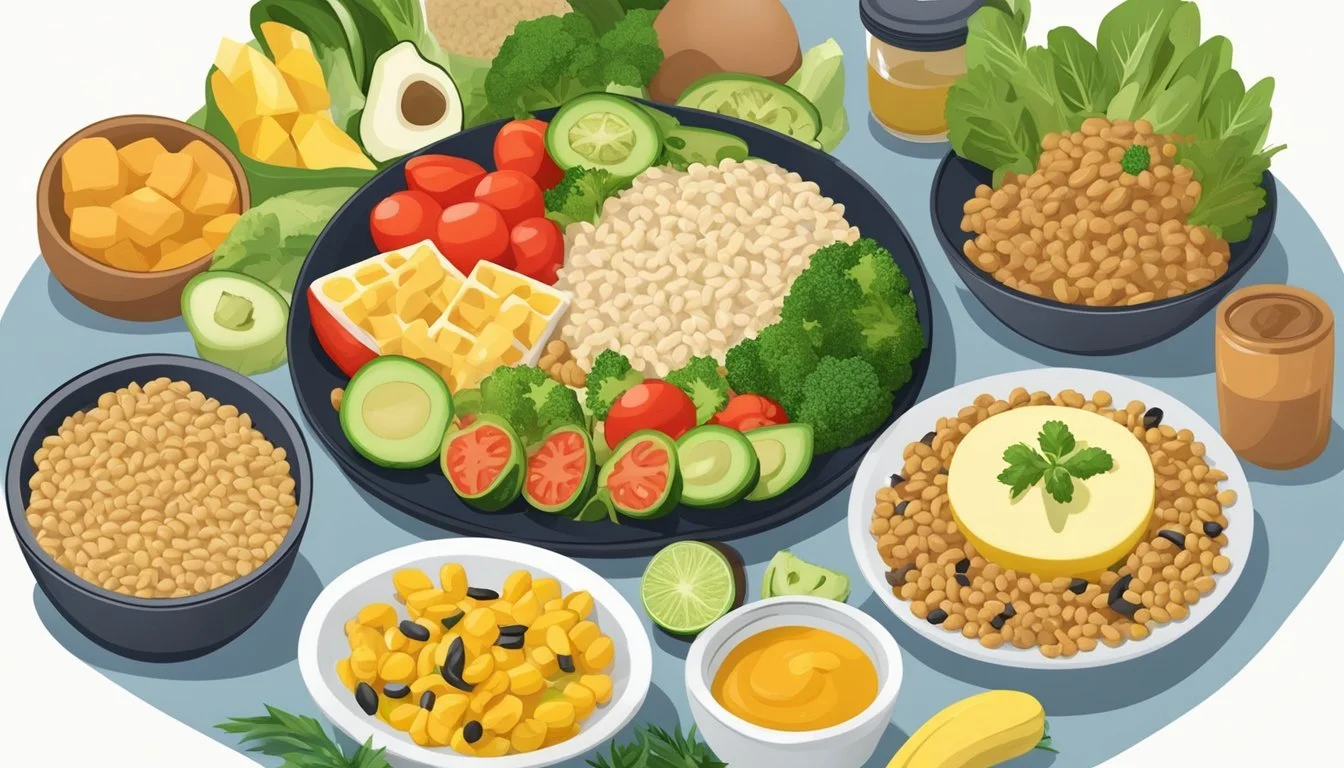Can Diabetics Eat Ackee?
Understanding Dietary Choices for Diabetes
When considering whether diabetics can eat Ackee, it's essential to weigh its nutritional benefits against potential risks. Ackee, native to Jamaica, is known for its protein, vitamins, minerals, and fiber content. Yet, unripe ackee can be toxic due to the presence of hypoglycin A, necessitating careful preparation and consumption.
For diabetics, the primary concern is how Ackee affects blood sugar levels. Some studies suggest that Ackee may help stabilize blood sugar, potentially aiding in diabetes management. However, these benefits apply only to fully ripe and properly prepared ackee, as unripe fruits can cause severe hypoglycemia.
The American Diabetes Association does not specifically list Ackee in their dietary guidelines, implying caution is necessary. Consulting with a healthcare provider before adding Ackee to a diabetic diet can help determine if its nutritional benefits outweigh the potential risks.
Understanding Diabetes and Nutrition
Nutrition plays a pivotal role in managing diabetes by influencing blood sugar levels and overall health. An effective meal plan balances carbohydrates, protein, and fats while focusing on portion sizes and glycemic index.
The Impact of Diet on Diabetes
Diet directly affects blood sugar levels and insulin response. Carbohydrates in foods break down into glucose, raising blood sugar. Diabetics must monitor their carb intake. High-fiber foods can stabilize blood sugar, while high-glycemic foods can cause spikes. A balanced diet includes non-starchy vegetables, lean proteins, healthy fats, and limited carbs. Understanding what foods to include and in what quantities helps maintain stable blood sugar levels.
Nutritional Profiles of Common Fruits
Fruits offer essential vitamins, minerals, and fiber, but their natural sugar content affects blood sugar differently. For diabetics, choosing fruits with a low glycemic index is crucial.
Berries (strawberries, blueberries) are high in antioxidants and low in carbs, making them suitable. Cherries can moderate blood sugar due to their low glycemic index. Grapefruit is another good option, providing vitamin C. Apples, oranges, and pears offer fiber, vitamins, and a reasonable glycemic index when consumed in moderation. Whole fruits are preferable over juices to maximize fiber intake and reduce sugar spikes.
Diabetes-Friendly Fruits and Serving Sizes
Proper serving sizes help manage carb intake and blood sugar. Here are some guidelines:
Berries: ¾ cup
Cherries: 1 cup
Grapefruit: ½ fruit
Apple: 1 small apple
Orange: 1 small orange
Pears: 1 small pear
Portion control is key. Whole fruits are more beneficial than fruit juices or dried fruits, which can rapidly increase blood sugar levels. Incorporate fruits into meals and snacks to balance carbohydrates, protein, and fat. Monitoring serving sizes helps ensure blood sugar remains stable while enjoying the nutritional benefits of fruits.
Acknowledging the Ackee Fruit
Ackee, a fruit native to Jamaica, offers a variety of nutritional benefits but also poses certain health risks if not prepared correctly.
What Is Ackee?
Ackee (Blighia Sapida) is a tropical fruit widely associated with Jamaica. It is famed for its savory, egg-like taste and creamy texture once cooked.
The fruit grows on trees and is characterized by its bright red pod which splits open when ripe, revealing creamy arils and glossy black seeds. It's vital to consume only fully ripe ackee, as unripe fruit contains toxic compounds.
Nutritional Content of Ackee
Ackee provides a unique nutritional profile, contributing to its appeal in dishes. Per 100 grams, ackee features:
Protein: ~2.9 grams
Fat: 19 grams
Carbohydrates: 3.6 grams
Fiber: ~3 grams
Minerals: Potassium, calcium, iron
Vitamins: High in Vitamin C and A
Despite its high fat content, it's primarily unsaturated fat, making it a healthier option compared to saturated fats.
Health Benefits and Risks of Ackee
Ackee offers numerous health benefits, such as:
Rich in Antioxidants: Vitamin C and fatty acids help combat oxidative stress.
High in Fiber: Promotes digestive health.
Contains Protein: Beneficial for muscle repair and growth.
Risks include:
Hypoglycin A: Found in unripe fruit and seeds, causing vomiting, severe hypoglycemia, or even death.
Preparation Required: Only consume fully ripe arils, discarding seeds and rind to avoid toxicity.
Safe consumption involves strict adherence to preparation guidelines, making ackee both a nutritious and risky choice.
Dietary Considerations for Diabetics
When managing diabetes, dietary choices play a critical role in maintaining stable blood glucose levels. Understanding how different types of fruits and portion sizes impact blood sugar is essential for effective diabetes management.
Safe Consumption of Fruits
Diabetics can enjoy fresh fruits by selecting those with a low glycemic index (GI), which have a slower impact on blood sugar levels. Fruits such as berries, apples, and pears are excellent choices. Bananas and melons like watermelon offer essential nutrients but should be consumed in moderation due to their higher GI.
Avoid canned fruits packed in syrup and opt for versions labeled no added sugar or unsweetened. Frozen fruits are a great alternative, especially when unsweetened and free of added sugars.
Understanding Portion Sizes and Varieties
Portion control is critical in diabetic diets. Small, controlled servings help manage blood sugar spikes. For instance, a portion of whole fruits the size of a tennis ball is typically considered appropriate.
Dried fruits like raisins are more concentrated in sugars and should be eaten sparingly. Only a small handful is recommended. Meanwhile, a half-cup of 100% fruit juice can be a serving, though it can raise blood sugar rapidly and should be consumed cautiously.
The Role of Whole Fruits in a Diabetic Diet
Whole fruits are beneficial due to their high fiber content, which aids in slowing down the absorption of sugar and improving digestion. Fiber also enhances feelings of satiety, helping to control hunger.
Including various fresh fruits in the diet can provide balanced nutrition and energy without significantly impacting blood glucose. Examples include incorporating fruits into balanced meals or as snacks in controlled portions.
Reading Product Labels and Identifying Added Sugars
Being vigilant with product labels is necessary as many processed fruit products contain added sugars. Scanning labels for terms like no added sugar is crucial, especially in canned, dried, and frozen fruits.
Look out for high sugar content in foods such as candy, dessert, and baked goods. Even products labeled as healthy can sometimes have hidden sugars, impacting blood glucose control. Focus on pure and 100% fruit juice options to avoid unnecessary sugar intake.
General Tips for Healthy Eating with Diabetes
Healthy eating with diabetes involves a combination of balanced meals, monitoring blood sugar, and tailoring dietary choices to fit individual needs. These habits help manage blood sugar and reduce risks associated with heart disease and other complications.
Incorporating Variety and Balance
A varied diet is essential for providing the body with necessary nutrients. Meals should include a mix of vegetables, grains, protein, and fiber.
For instance, half the plate should be filled with non-starchy vegetables, like spinach or broccoli. One-quarter should contain lean proteins, such as chicken or fish, and the remaining quarter should have whole grains.
Including whole fruits and nuts can also offer fiber and essential nutrients. Limiting saturated fats and refined carbohydrates helps maintain better overall health. Portion sizes are crucial; controlled portions prevent overeating and aid in blood sugar management.
Monitoring and Managing Blood Sugar
Regular monitoring of blood sugar is vital for those with diabetes. Exercise plays a significant role in maintaining healthy levels. Engaging in physical activity, like walking or cycling, helps utilize glucose more efficiently.
Carbohydrates have a direct impact on blood sugar. Counting carbs and distributing intake evenly throughout the day can prevent spikes and drops. Collaborating with healthcare professionals to develop a suitable eating plan ensures individualized targets are met.
Additionally, keeping an eye on blood pressure and inflammation markers can help prevent complications such as heart disease and cancer.
Adapting Dietary Choices for Individual Needs
Diabetes management is not one-size-fits-all. Dietary choices should respect personal preferences and health conditions. Consulting a dietitian or diabetes educator can help tailor a plan fitting specific needs and goals.
For some, weight loss can significantly improve blood sugar control. A nutritious, well-organized meal plan can aid in safe and effective weight loss. Emphasis should be on healthy foods, appropriate portion control, and balanced meals.
People may also need to adapt their diets based on medication interactions. Understanding how foods and medications work together prevents adverse effects and optimizes diabetes management. Working closely with healthcare providers ensures the best dietary choices are made.
Conclusion and Professional Advice
People with diabetes need to be cautious with their diet choices. When it comes to ackee, there are several factors to consider.
Ackee is safe to consume when ripe but can cause hypoglycemia due to its blood sugar-lowering effects. Monitoring blood glucose levels is crucial, especially if one is already on medication for diabetes.
It's advisable to consult a healthcare professional before introducing ackee into a diabetic diet. This ensures personalized advice based on individual health conditions and medication regimens.
Pregnant women with diabetes should be particularly careful. The Centers for Disease Control and Prevention advises strict monitoring of dietary changes during pregnancy.
For those who include ackee in their diet, it's recommended to track blood sugar levels regularly to avoid dangerous lows. Alternatives high in fiber and nutrients, as recommended by the American Diabetes Association, should also be considered.
Pay close attention to interactions with other medications. Ackee might have a compounded effect on blood sugar levels when combined with diabetic medications.
Always prioritize professional guidance and individual health circumstances to ensure safe dietary practices.







